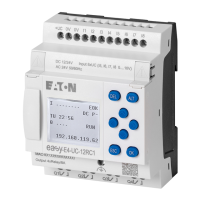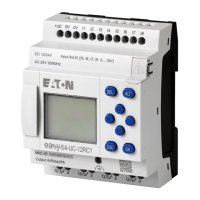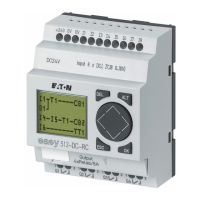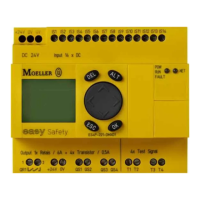6. Function blocks
6.1 Manufacturer function blocks
Message text
Fig. 231: Example showing an exact value message text
Message texts can be used to display various texts in succession in a single line.
This can come in handy, for instance, for operating or maintenance procedures in
which the display needs to ask the operator or maintenance technician to carry out a
step, then another step, then another, etc. In this case, the text can be changed
every time the operator or maintenance technician performs the requested action
(increment/decrement).
The required texts need to be entered into the table under the Message text tab,
where you can also select the corresponding colors and the display type. To do this,
you need to specify a status value for each system text. This status value (bit or
decimal value) will then be used to call the corresponding message text in the user
program (if you are using more than two texts, please make sure to select the "Value"
type). An operand that can be selected under the Associated variable tab will be
used to control how the texts are displayed. You can select local or network oper-
ands of type byte, word, or double word.
Default Text
The default text will be shown in exact value mode as soon as the value of the asso-
ciated variable does not match any of the stored status values.
The default text will be shown as soon as the value of the associated variable is less
than the lowest specified status value.
Resize mode
l
Exact value
If you select the exact value, a text will only be displayed if the value is exactly
equal to the configured value mode.
easyE402/24 MN050009ENEaton.com
493

